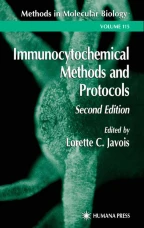
In this chapter, two commonly used techniques that are utilized in many immunoglobulin purification schemes are described. The first procedure, ammonium sulfate fractionation, is generally employed as the initial step in the isolation of crude antibodies from serum or ascitic fluid (1–5). Ammonium sulfate precipitation, in many instances, is still the method of choice because it offers a number of advantages. Ammonium sulfate fractionation provides a rapid and inexpensive method for concentrating large starting volumes. “Salting out” of polypeptides occurs at high salt concentrations where the salt competes with the polar side chains of the protein for ion pairing with the water molecules, and where the salt reduces the effective volume of solvent. As expected from these observations, the amount of ammonium sulfate required to precipitate a given protein will depend mainly on the surface charge, the surface distribution of polar side chains, and the size of the polypeptide, as well as the pH and temperature of the solution. Immunoglobulins precipitate at 40–50% ammonium sulfate saturation depending somewhat on the species and subclass (3). The desired saturation is brought about either by addition of solid ammonium sulfate or by addition of a saturated solution. Although the use of solid salt reduces the final volume, this method has a number of disadvantages. Prolonged stirring, required to solubilize the salt, can lead to denaturation of proteins in the solution at the surface/air interface (6).
This is a preview of subscription content, log in via an institution to check access.